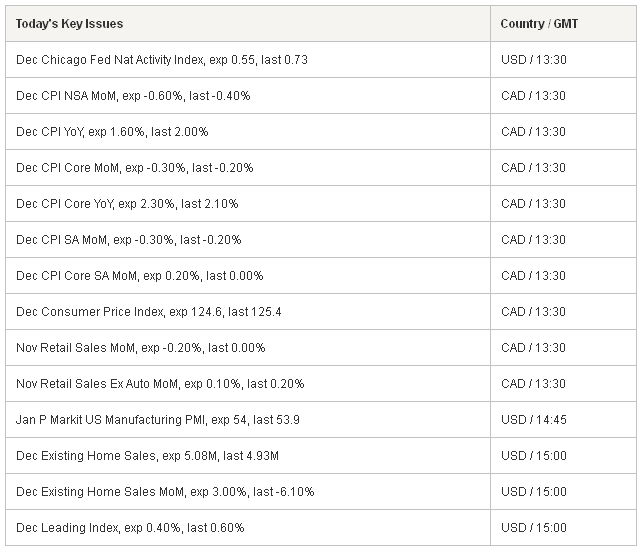Forex News and Events
The leading central banks diverge from the policy normalization as the global slowdown in inflation – or dangerously nearing deflation – push the policymakers away from any tightening in rates. In contrary, the surprise Canadian, Danish and Turkey rate cuts this week, the sharp dovish shift in the BoE combined to the sizeable ECB QE keep the liquidity conditions very favorable for market players. The risk-on sentiment encourages carry traders to take advantage of the rate differentials. Among the favorite high-yielders are the lira (despite 50 bp cut this week) and the real (reinforced by 50 bp hike).
The broad sell-off in EUR triggered fresh sell-signal in EUR/TRY. The cross should further challenge 2.5848/2.6673 supply zone (2011 double top / Fibonacci 38.2% on May’13 – Jan’14 rally). As EUR/BRL clears support at 3.00, we expect the extension of the bear move to 2.8897 (Sept 2014 low), then 2.8135 (Fibonacci 50% on sharp 2008-2010 drop).
ECB unveils the QE package
The ECB announced the much expected QE package in addition to TLTROs and private debt purchases programs launched in the last quarter of 2014. The new QE program consists of 60 billion euros worth government bonds and European institutional debt purchases per month from March 2015 to September 2016. This sums up to 1.14 billion euro package, higher than the market estimates of 750 billion - 1 trillion euros expected in case of a risk sharing framework with the National Central Banks (NCBs). The Eurosystem will carry the 20% of the risk and the rest will be on individual NCBs’ shoulders. The ECB will buy investment grade bonds only, and the purchases will not exceed 25% of issuer’s debt issue, and 33% of issuer’s total debt. The operation will be “conducted until […] sustained adjustment in the path of inflation which is consistent with aim of achieving inflation rates close to 2% over the medium term”. This means that this QE program should bring the ECB’s balance sheet toward 2012 levels as declared formerly. While more stimulus is not overruled to push the inflation toward 2% targeted further than September next year.
The inflation outlook required forceful policy response, said Draghi at his speech in Frankfurt yesterday as the 5y5y inflation swaps fell below 1.5% mid-January. The efficiency of the ECB program remains uncertain however, given that healthy transmission toward the real economy is crucial to push the liquidity to enhance economic activity. This requires structural reforms and growth-friendly fiscal consolidation. Draghi warns it would be a big mistake if countries use the program for fiscal expansion.
The Greek puzzle
The Greek bonds will, in principle, be eligible after the 2010-2012 SMP redemption, meaning by July. However, the political situation in Greece remains quite uncertain before January 25th elections with the anti-European Syriza’s leading the election polls. The PM Samaras said in his speech in Thessaloniki that the country risks exclusion from the QE program if the bailout review stalls. Greece needs to agree on the extension of the aid program by February 28th in order to receive 7.2 billion euros aid payment and also to become eligible for the QE. We believe that at this stage a coalition with Syriza will be set amid Jan 25 elections and temper the Grexit speculations.


The Risk Today
Luc Luyet
EUR/USD EUR/USD was sent lower by the ECB yesterday, making 10-year lows. A psychological support lies at 1.1000. Hourly resistances can be found at 1.1460 (16/01/2015 low) and 1.1541 (20/01/2015 low). In the longer term, the symmetrical triangle favours further weakness towards parity. Key supports can be found at 1.1000 (psychological support) and 1.0765 (03/09/2003 low). A resistance lies at 1.1679 (21/01/2015 high), while a key resistance stands at 1.1871 (12/01/2015 high).
GBP/USD GBP/USD has broken to the downside out of its horizontal range defined by 1.5035 and the resistance at 1.5274. Further short-term weakness towards the strong support at 1.4814 is favoured. Hourly resistances can be found at 1.5058 (20/01/2015 low) and 1.5213 (22/01/2015 high). In the longer term, the technical structure is negative as long as prices remain below the key resistance at 1.5274 (06/01/2015 high, see also the declining trendline). A full retracement of the 2013-2014 rise is expected.
USD/JPY USD/JPY remains below the hourly resistance at 118.87. However, the recent succession of higher lows (see short-term rising trendline) suggests increasing buying interest. Hourly supports lie at 117.25 (22/01/2015 low) and 116.93 (19/01/2015 low). A key resistance stands at 119.96 (see also the declining channel). A long-term bullish bias is favoured as long as the key support 110.09 (01/10/2014 high) holds. Even if a medium-term consolidation is likely underway, there is no sign to suggest the end of the long-term bullish trend. A major resistance stands at 124.14 (22/06/2007 high). A key support can be found at 115.46 (17/11/2014 low).
USD/CHF USD/CHF is trying to find a new equilibrium after the SNB's announcement. Yesterday's break of the short-term declining trendline favours further sideways moves. Supports can be found at 0.8501 and 0.8353. An hourly resistance lies at 0.8773 (21/01/2015 high), while a more significant resistance stands at 0.8838. Following the removal of the EUR/CHF floor, a major top has been formed at 1.0240. Given that the subsequent panic has not broken the strong support at 0.7071 (09/08/2011 low), this level should hold in the next months. A medium-term sideways move between the key support at 0.8353 and the key resistance at 0.9132 is favoured.

